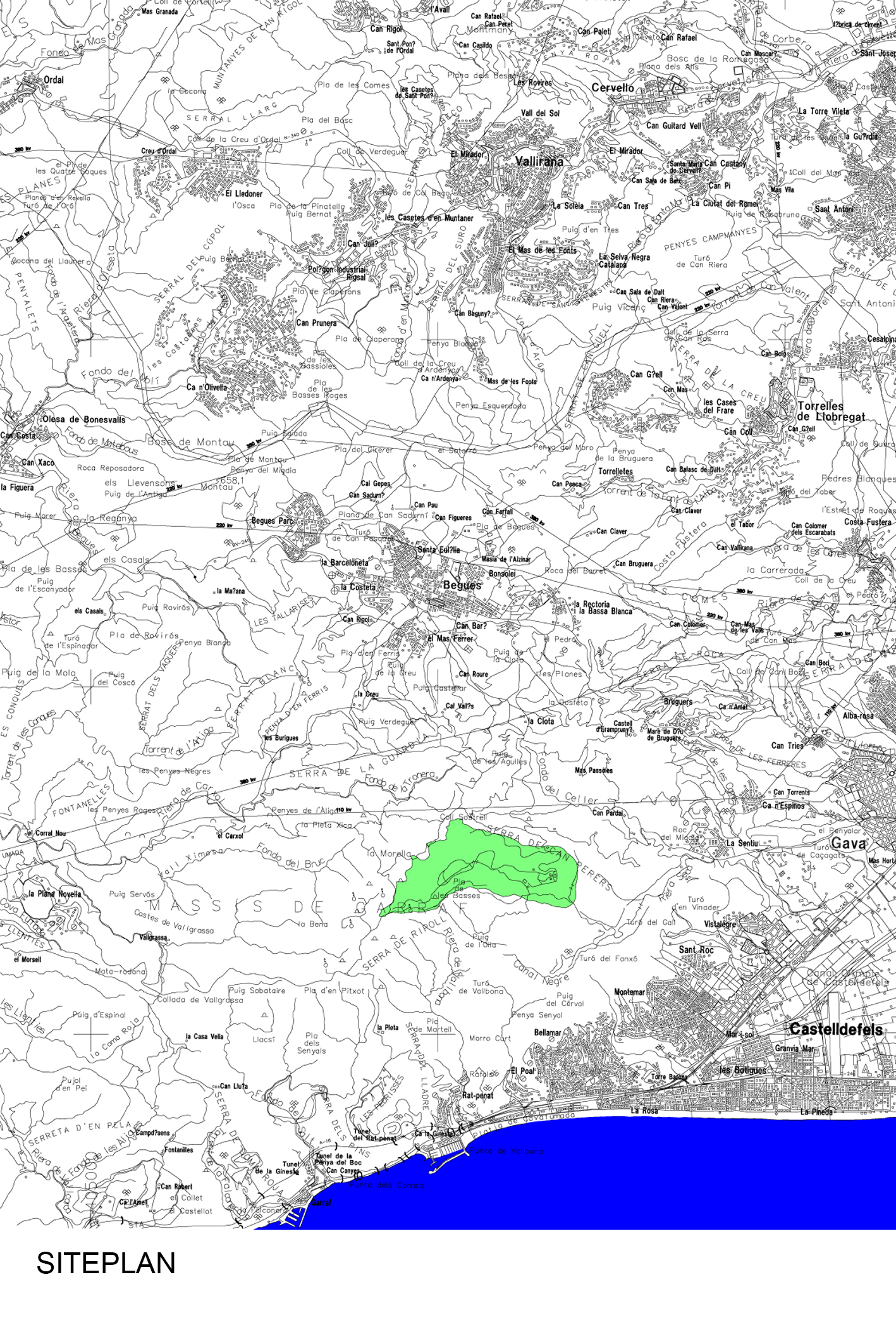
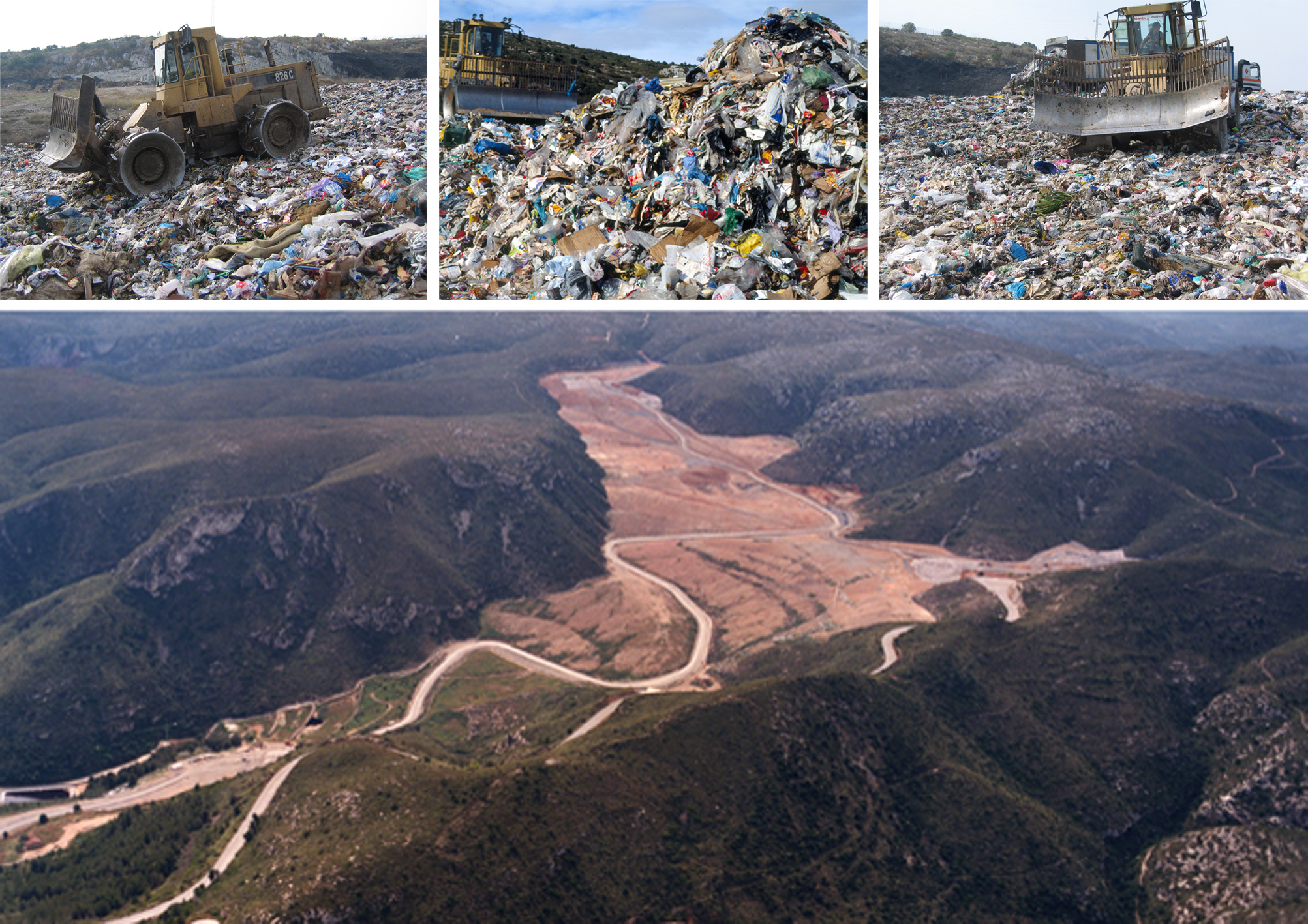
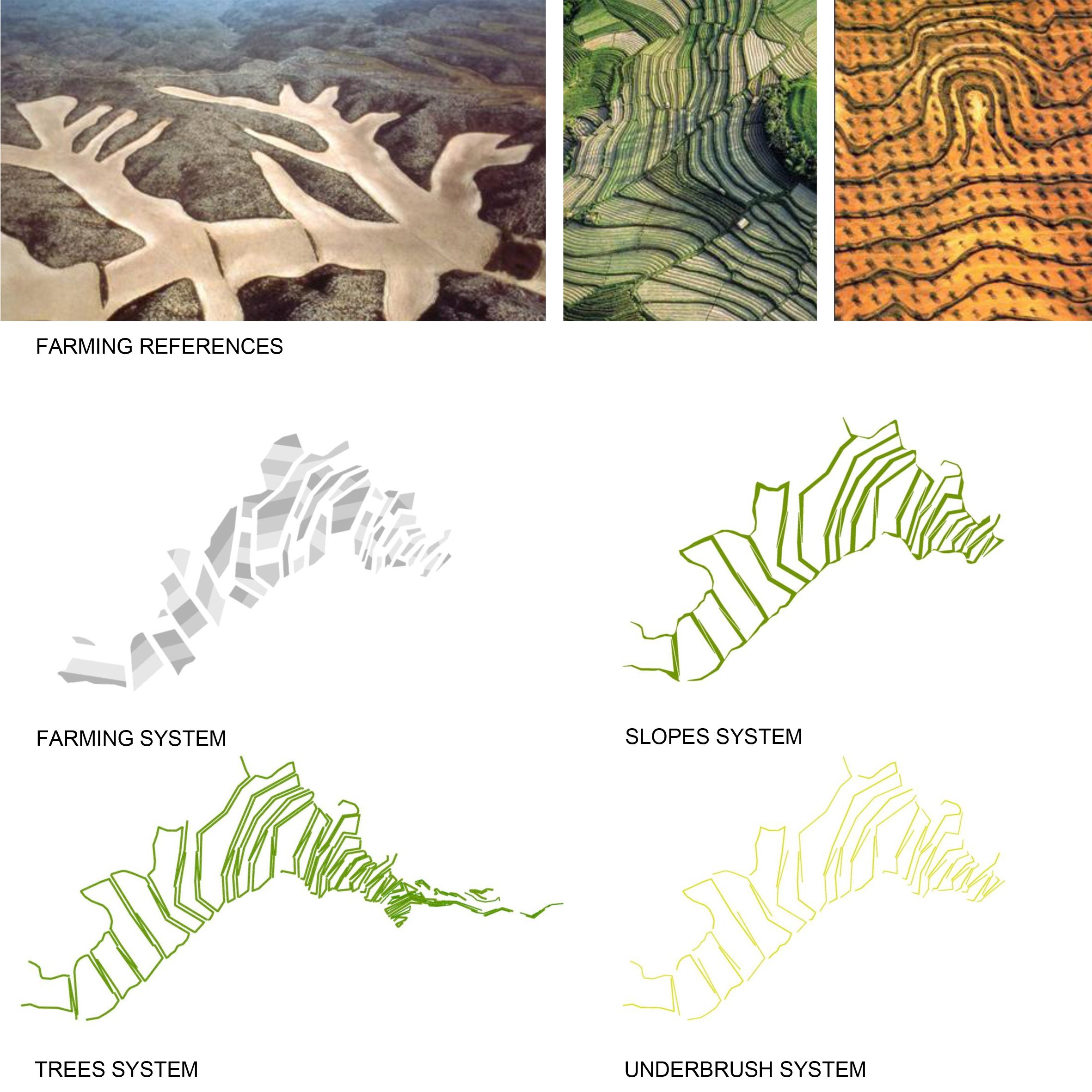
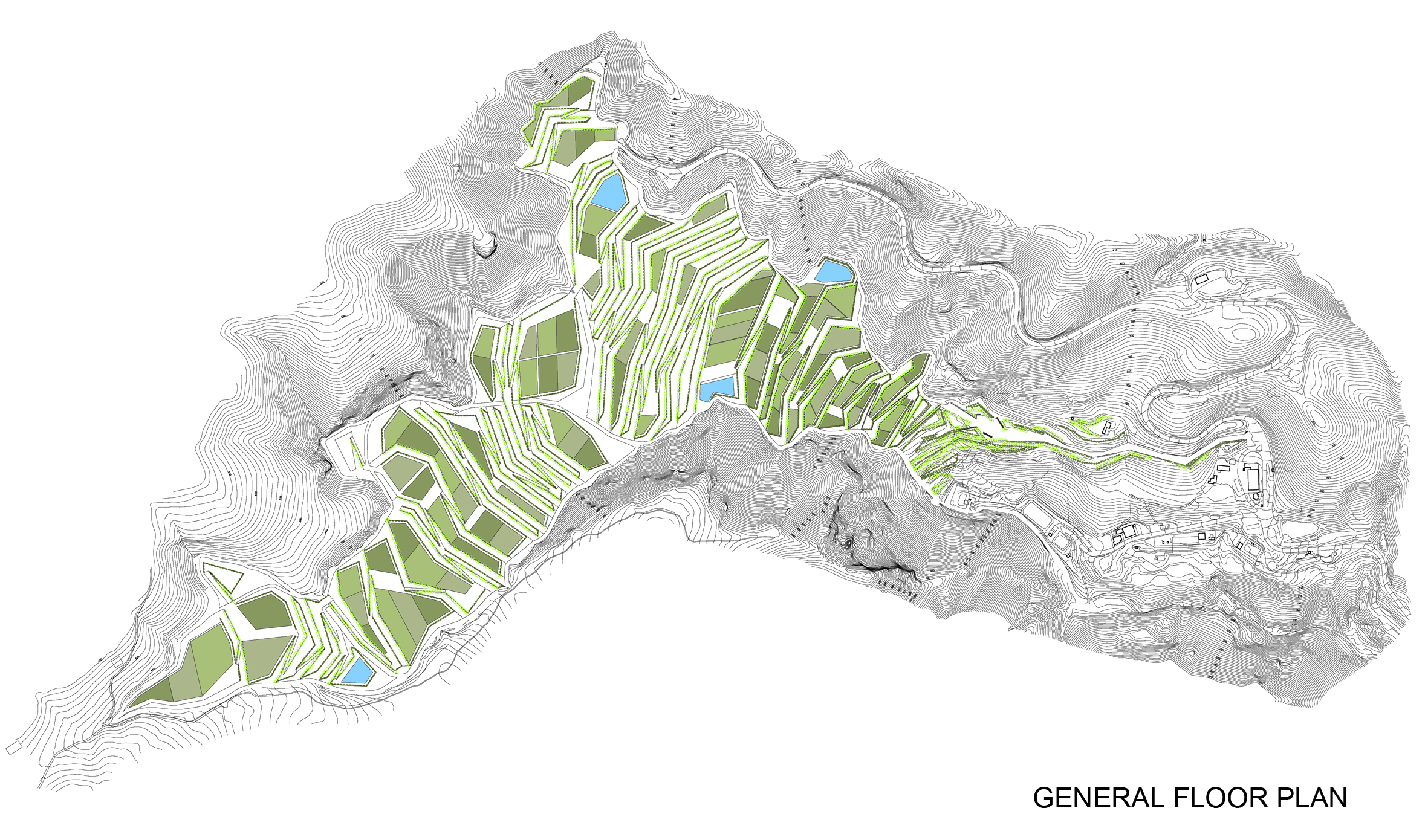
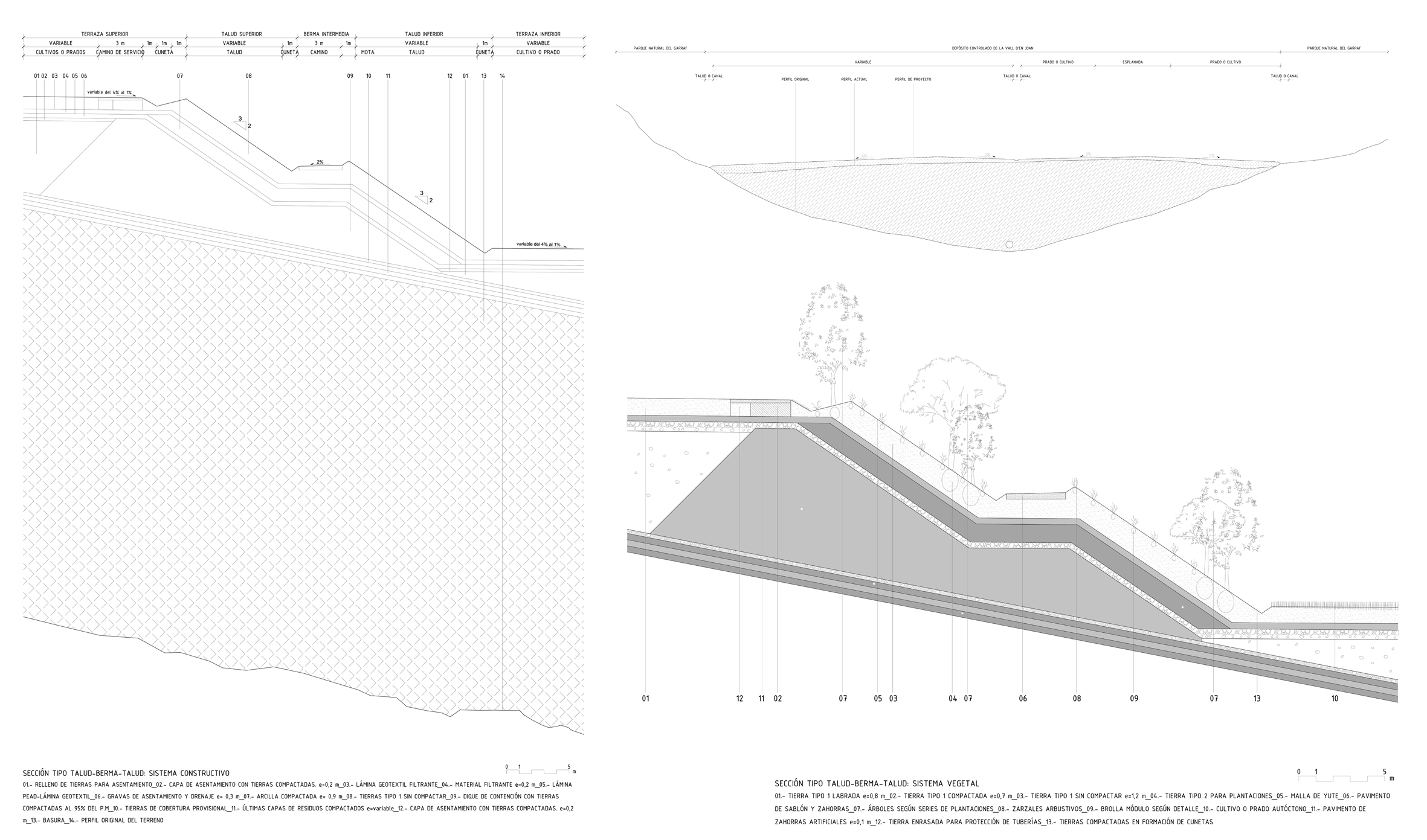
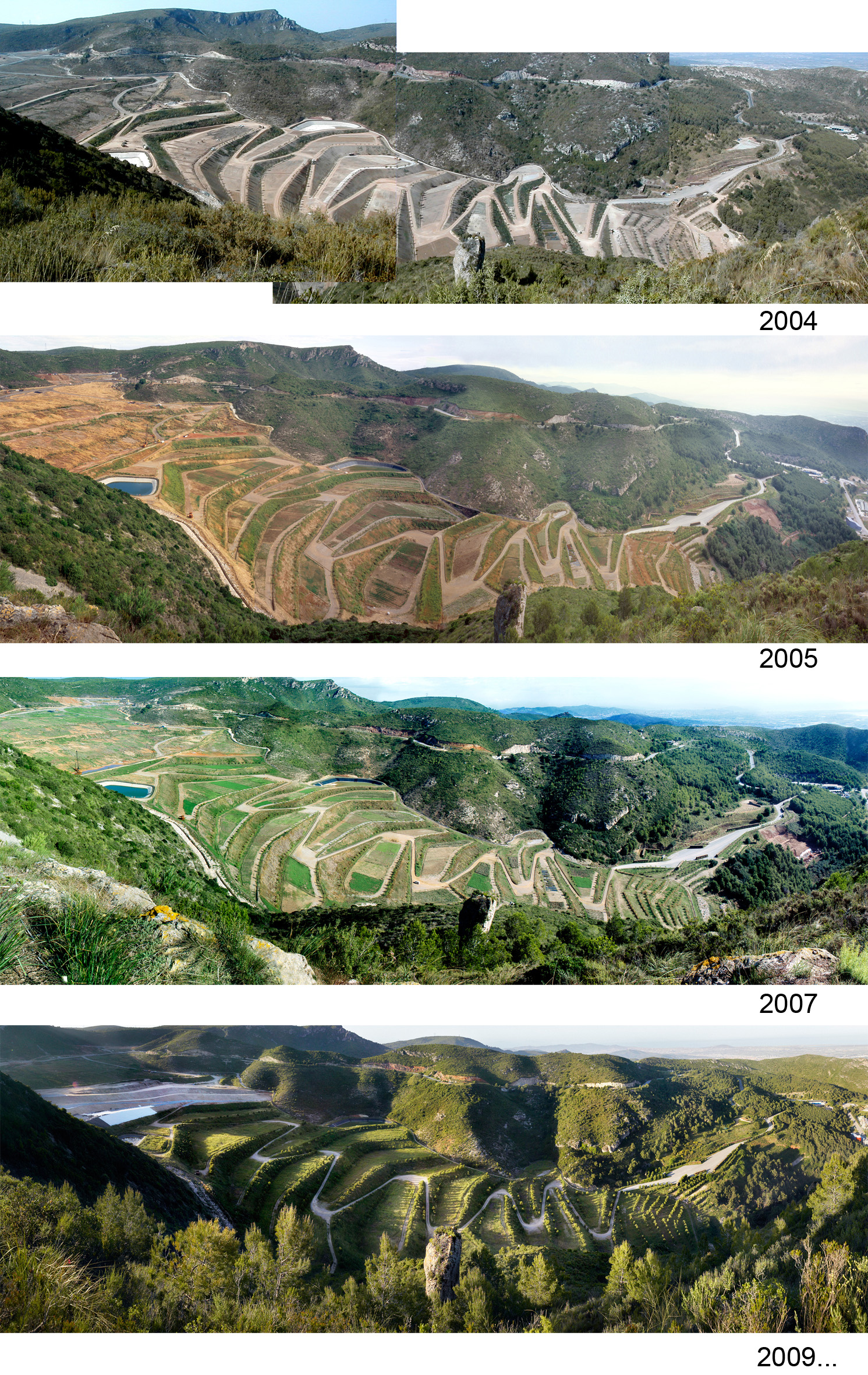
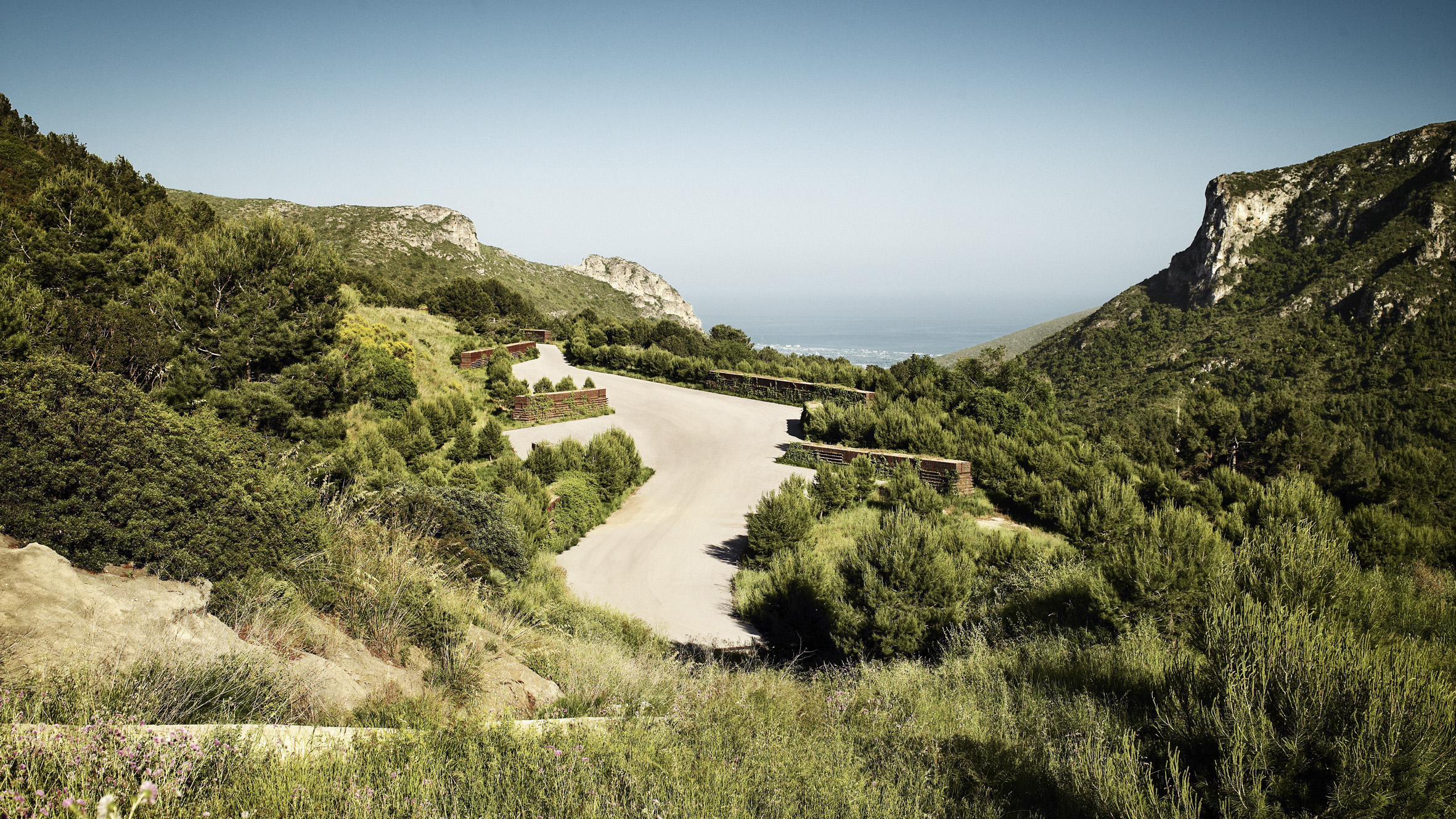
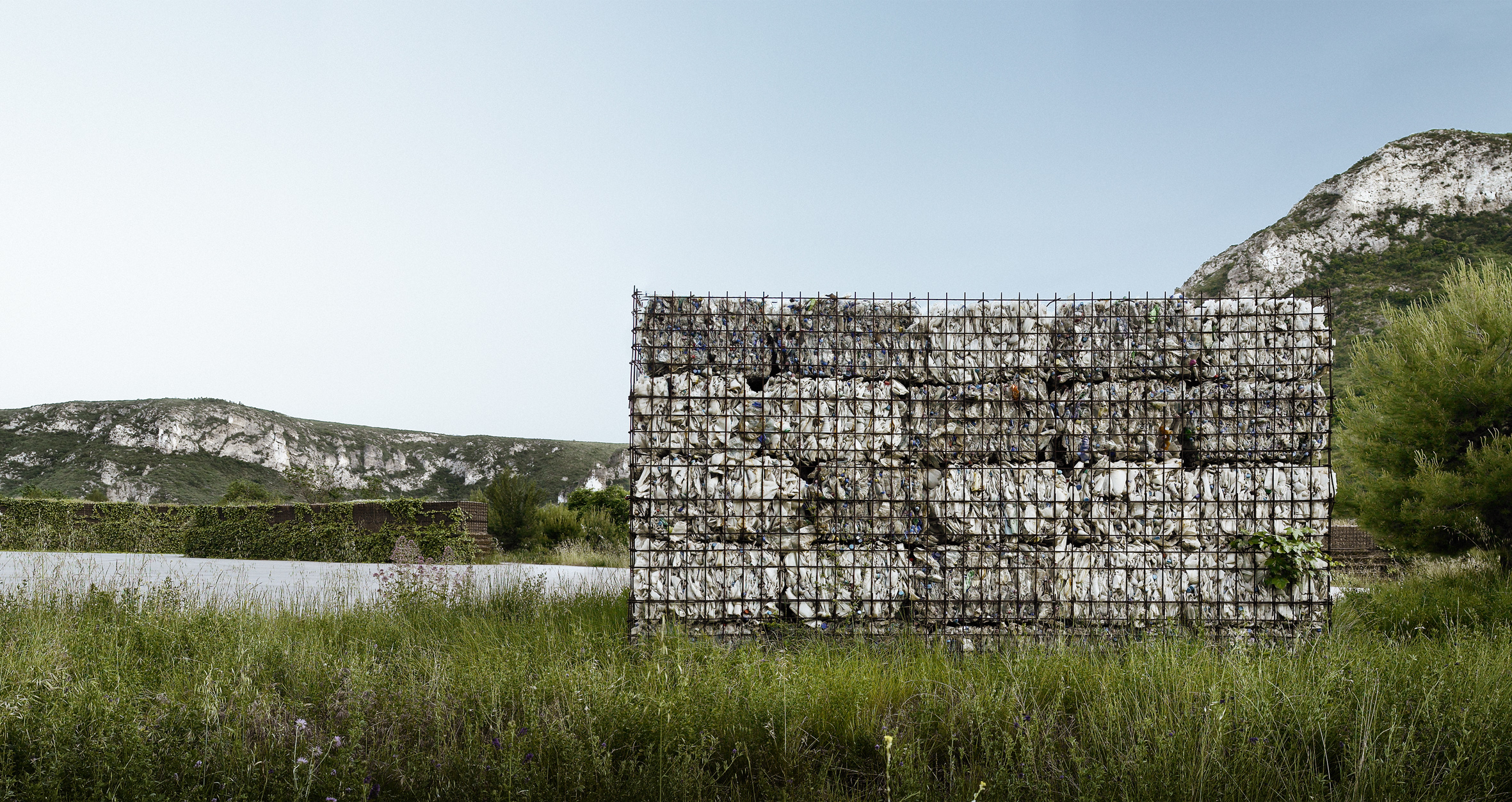
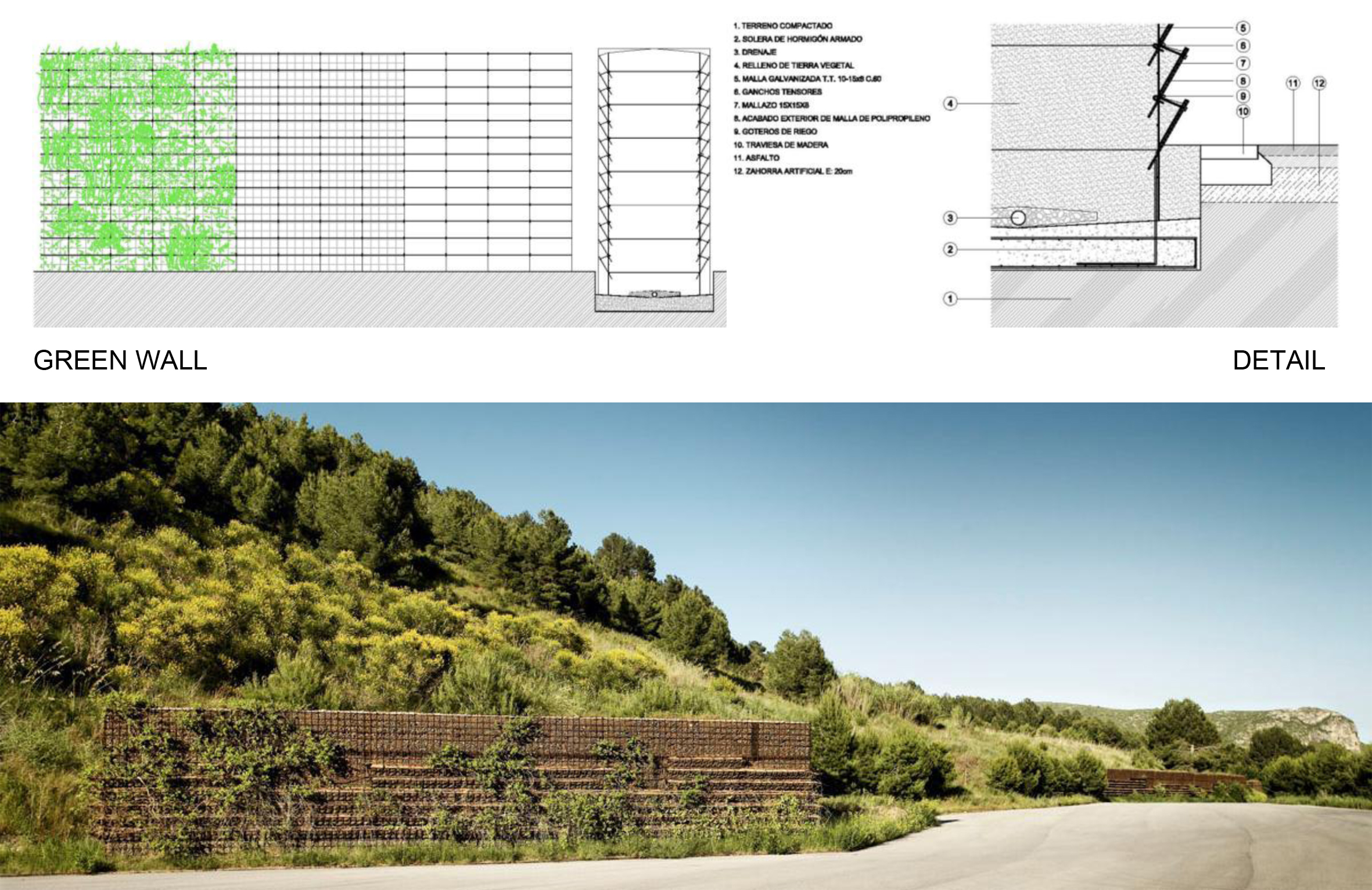
The Vall d’en Joan waste dump was opened in 1974 in a valley in the limestone massif of El Garraf, in the natural park of the same name. Infilling began at the lowest point. Shrubs and trees were eliminated, the site was waterproofed with clayey soils, a drainage system was installed for the leachates and work began on the superposition of layers of waste matter, alternating with shallow layers of earth. As the bottom of the valley was filled in, the waterproofing was extended. The landfill now occupies 70 hectares with a depth of waste matter of over 80 metres at some points. At the start of the restoration project, a layer of earth covered the latest deposit of refuse. A large concrete ditch separates virgin land from the operational waste dump and channels drain runoff from the mountainside. Semi-clean waters and runoff water from the working area accumulate in a reservoir, where they are treated. The restoration process began at the lowest levels while the waste tip was still in use higher up. A new and completely different system was superposed on the existing one, and the two will coexist until the dump is closed. Restoration will only be complete three
years after closure.
Earthwork: The construction of terraces at the waste dump was determined by the need to contain rubble; this criterion is imposed on working waste dumps to ensure the stability of the great mass of accumulated waste. Due to the configuration of the subsoil, excavation is not possible in this process. The only way of forming terraces is by importing material. The site’s steep slopes called for the construction of retaining walls more than 10 metres high, requiring a great deal of imported earth (465,000 m3 for the first 20 hectares).
Soil: The determining element in farming is the soil. The new earth was imported over two periods. The first served to build the basic structure of terraces and fill in the space between the retaining walls. The second was used to form a layer of fertile land for the introduction of vegetation. Between the two were laid layers of sand, geotextile, waterproof lining and a second layer of sand to separate the waste dump from new soil. The heterogeneous, inert soil had to be made fertile and suitable for planting with a crop that would grow down into the layers formed by the passage of machinery, removing stones and breaking up the terrain to make it uniform and produce the finished profile. Then manure was applied to specific planted areas (slopes and rows of trees) and plant compost to the terraces to improve the structure and texture of the soil. Crop rotation based on leguminous plants was also established on the terraces in order to improve soil fertility
Vegetation: Three types of plants were employed in the restoration of the waste dump: rows of pine trees lining the drainage channels and paths, an assortment of shrubs on the slopes and leguminous crops on the terraces. The planting of pine trees and shrubs represents a major investment per square metre of restored land. The introduction of leguminous crops, conversely, is low in cost per square metre but requires a much longer management period (two to three years). These crops may be native species of the Garraf (planted very densely on the land adjacent to the park) or the agricultural species that are sown on the other plots.
Management: Farming operations are linked to production cycles and are at the mercy of unpredictable factors such as the appearance of pests, diseases or unexpected changes in the weather. This forces farmers to adapt management tasks and
be constantly alert to crop development. Some interventions are preventive, others curative. The ultimate aim is to bring about the implantation of species that are native to the Garraf, whether by means of direct introduction on the slopes (planting, irrigation and weeding) or by providing the conditions conducive to natural propagation on the terraces. The latter case calls for observation of the growth of invasive species. Pioneering or excessively invasive species will be eliminated and the most suitable plants will be selected. In addition to farming, the project also takes into account the various spontaneous natural processes.

| Tipologia | Infraestructures |
| Promotor | AMB (Area Metropolitana de Barcelona), Diputació de Barcelona, Entitat Metropolitana de Gestió de Residus |
| Promoció | P?ca |
| Localització | Barcelona, Gava i Begues, Espanya |
| Àrea | 125000 m² |
| Any inici | 2001 |
| Any finalització | 2010 |